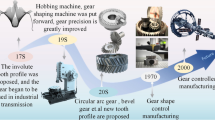Abstract
A rotary bending fatigue test was carried out with two kinds of materials, S43C and S50C, using the front engine and front driveshaft (F.F. shaft) of the vehicle. The specimens were heat-treated using the high frequency induction method (about 1 mm depth and HRC56∼60) and the test environment temperatures were -30 °C (-22 °F), +25 °C (+77 °F), and +80 °C (+176 °F) in order to determine the influence of the heat treatment and the temperatures.
The fatigue life increased on the order of +80 °C, +25 °C, and -30 °C regardless of heat treatment. In comparison of the fatigue lives with the basis of the tested result at +25 °C, the fatigue lives of non-heated specimens decreased about 35%, but that of heat-treated specimens decreased by only about 5% at +80 °C, more than at +25 °C. And fatigue life of non-heated and heat-treated specimens were about 110% and 120% higher at -30 °C than that of +25 °C. The initiation of surface microcracks was observed at 0.2 fatigue life ratio in as-received S43C and S50C, but the average crack length in S50C was about 14% longer than that of S43C at the same fatigue life ratio.
Similar content being viewed by others
References
Broek D (1978) Elementary engineering fracture mechanics. 4th ed. Martinius Nijhoff Publishers, Dordrecht
Hertzberg RM (1983) Deformation and fracture mechanics of engineering materials, 2nd edn. Wiley, New York, pp 619–665
Song SH, Won ST (1991) Behavior of initiation and propagation of fatigue crack under periodic over stressing. KSME 15(6):1389–1851
Bush JJ (1961) Microstructural and residual stress changes in hardened steel due to rolling contact. Trans ASM 54:390–398
Tada H, Paris PC, Irwin GR (1973) The stress analysis of cracks handbook. Del Research Corporation, Hellertown, Pennsylvania, pp 20-1–20-2
Nisitani H, Takeo I (1981) Significance of initiation, propagation and closure of micro cracks in high cycle fatigue of ductile metals. Eng Fract Mech 15(3–4):445–456
Kitagawa H, Nakasone Y, Iida M (1985) Statistical variation in growth rate among multiple small cracks in fatigue. JSME 51(461):179–183
Nisitani N-M (1966) Electronic polishing of notched rotary shaft. JSME 39(323):2005–2012
Broek D (1988) The Practical Use of Fracture Mechanics. By Kluwer Academic Publishers, Phillip Drive, Norwell, MA, USA, pp 48–87
Julie A, Jess J, James L (1990) Fundamentals of metal fatigue analysis. Prentice-Hall, Inc. A Division of Simon & Schuster Englewood Cliffs, New Jersey, pp 88-156
Annual Books of ASTM Standards (1976) Standard test method for measurement of fatigue crack growth rates. Vol. 0301, E647-88, p 328
Nisitani H, Morigou M (1976) Evaluation of crack propagation characteristic by rotary bending test on small hole specimen. JSME 42(354):325–335
Author information
Authors and Affiliations
Corresponding author
Rights and permissions
About this article
Cite this article
Lee, DG., Jang, KC., Kuk, JM. et al. Comparison of the fatigue life of F.F. shaft material according to various environmental temperatures. Int J Adv Manuf Technol 26, 896–908 (2005). https://doi.org/10.1007/s00170-003-2047-6
Received:
Accepted:
Published:
Issue Date:
DOI: https://doi.org/10.1007/s00170-003-2047-6




